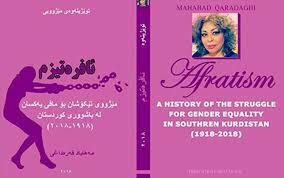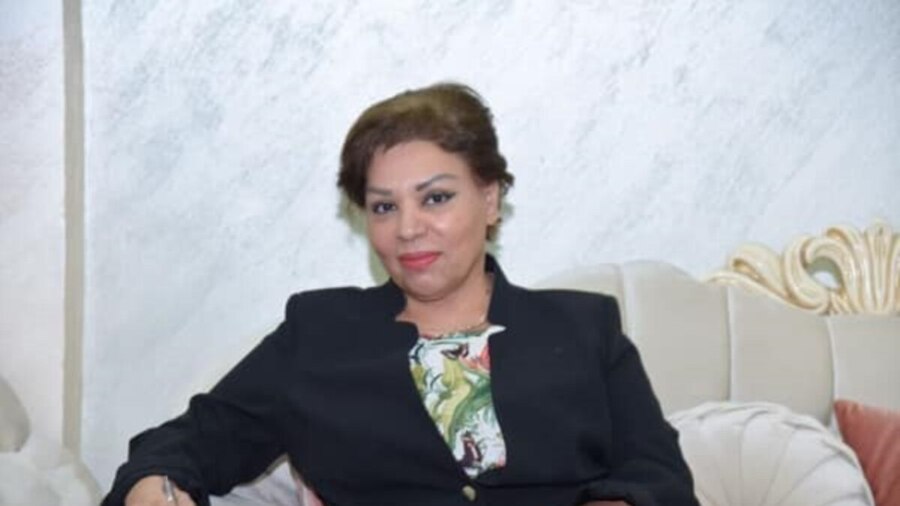As it was mentioned before the book “Freeing the History” probes Kurdish women’s agonies and problems elaborately and it is a very accurate study that was published 18 years ago.
The poetic novel “Love is Life’s Elixir” is written on the same thoughts. Here I only talk about the preface of this book and I will talk about the rest of it later.
The book starts in an unpopular way:
Place: Uranus
Time: When I think about you, all the time
Letter: The one thousand and first one
In the name of You who is great and kind
Dear Las! Along with my long-lasting kiss
This is how the letter begins. The narrator uses this form to invite the reader to keep on reading. The beginning and preface of the letter is the start of a poetic novel in which the primer circumstance and the characters are represented by revealing some details.
The narrator begins by talking about a hard way and as a result she had to seek refuge in Uranus. She says that she is studying at the Sun’s school. Later she describes the place in a poetic language: “In this planet, the formal language is the language of light_ the darkness of my soul light up and I can speak, too.”
Such a description of a place is in comparison with the place where the female narrator, Khazal, lived before. A place called the Earth. Thus, in this way by comparing two environments, two planets, and two forms of life; life on Earth in the past and life on Uranus now, a door to a new story opens up. In both of these places, she is in a school named the Sun, however, gradually the comparison of these two schools reveals the atmosphere that is dominant over each one of them.
According to what the narrator says about the Sun school on Earth: “It is only a place, school or institute that the students cannot benefit from the beams of light. It is only a cliché, a lifeless and rootless place. It is a place of doubts”.
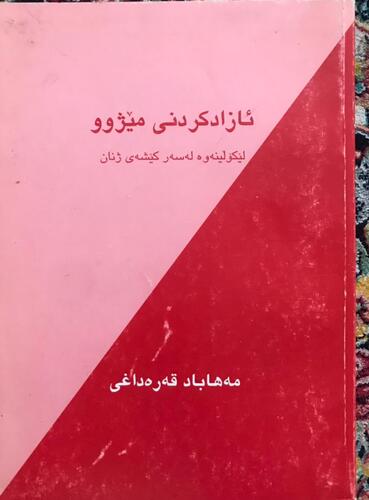
The Sun School on Uranus is made of love, the rules are written with the ink of light, and they are based on the laws and rules of love. In the first environment soul and body is dark. Whatever she had discovered was not through the light of that environment. The place had made her dark so she turned back to herself and her inner mirror inside her body to find beauty. This is the way how she finds her lover Las who is the person to whom she is writing this letter. This return to herself represents the narrator’s love and it is the reason for finding this love. A love that cannot be forgotten.
The writer creates a mysterious atmosphere to represent a character who is the representative of women. A woman who is released from a well of the past like a miracle and is in the present time on another planet looking for light.
The narrator wishes to write an unfinished letter that she had started to write with a new planet’s language and the ink of sunlight. She finishes it and writes the address to the red planet of Earth. She doubts it reaches the destination.
Apart from the narrator’s character who is Khazal, and Las, who is the man the narrator is writing the letter to him, another character named “Sewa” is represented, too. “Sewa” lives on Venus. He sends messages to the narrator from Venus. He talks about himself like this: “Thanks to Las’s looks that have nested in your eyes so warmly that I have been born through them”.
“Sewa” is the result of the narrator’s and her lover’s looks at one another. The result of Love. It is the result of their epic love that is now living on Venus. “He studies engineering the Universe in a university on Venus. Sewa was also from the Earth but now a miracle has taken him to Venus”.
Sewa, his professor, and the other students want to change Earth’s appearance. They believe that if the Earth was not round it could not play so many tricks and … Sewa has concluded that Earth should be triangular. The narrator does not talk about this anymore and she decides to reveal the reason for it when she talks to Sewa in person so that he would talk about it himself.
The rest of the narration/ the letter is about the place where Las lives. Through this description, the narrator indicates the problems of people’s modern life. She talks about the overpopulation of the Earth. Uncontrolled development of the industry. She complains about the environmental damage. The effects of big companies and capitalism on people’s lives and the lack of human feelings and mechanical life are among those problems. A life that resulted in a half live half-dead human being. “The company of reaping humans is still working. The sexual organs of men and women have been turned into some machines for this company and they only make babies. Half live, half dead babies. Particularly on those parts of the Earth where love is forbidden and kisses are crucified, people suffer more” and …
In this part, the narrator questions modern life and all its prominent achievements. Those achievements that have influenced people’s lives and have resulted in the creation of some senseless human beings.
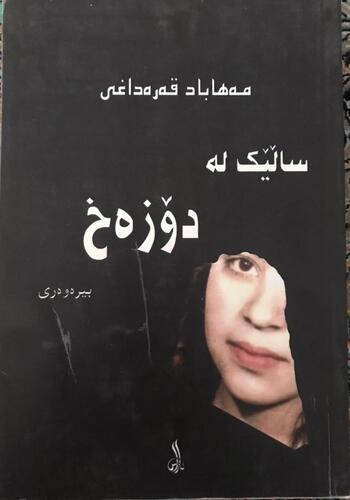
In fact, the narrator has started this letter with all these concerns written on it when she was still on Earth but she could not finish it there so now in another place_ time; that is in another millennium and on another planet, while she is learning the language of light with the grammar of love she tries to finish it.
She could not give her letter to her lover on the previous millennium and planet because apparently, the letters don’t reach their destinations on Earth. She wants to send him a letter from Uranus by a pigeon without any address or envelope, without the fear of getting lost. A pigeon whose blood is white like snow. Obviously, we can interpret all these symbols elaborately.
What we read in this part of the narration is the spell of the land and memories of the past on Earth. Looking back at the past life of the narrator is the goal of this part of the narration.
Looking back and narrating at the same time. The narration of the romance and the dreams she once had as a young girl. The narrator communicates her childish dreams and her wish to merge with the world of wind, to have wings for flying to the borderless lands. A childish fantasy is to break the borders. It is also creative. These creativities can be born and grow in a world where there is no limit and obstacles. She flies to reach God.
She narrates her relationship with God. She talks about her relationship with the limitless world and then by revealing the atmosphere of the school she attended which is a symbol of modern institutions, she talks about the death of her dreams. Although this part is totally related to other parts and is enjoyable at the same time it is a serious but short criticism of the educational system that kills children’s dreams and wishes, like a dandelion against thunder. This perspective is very similar to “Sohrab Sepehri”’s perspective on Iran’s deformed educational system in his book “The Blue Room”. In order not to deviate from the main subject I only mention some sentences from this book: “The worst thing was the school bell. Juliet Adams never suffered as much as I did from that evil noise. That noise would murder my dreams. It tore my feelings. It stopped my enjoyment and it would hide me in my school bag”.
In this part, the narrator talks about her family and society as obstacles. She hits two birds with a rock. She reveals the circumstances of education and a girl at school or among her family and the problems she faces on her way to school. “Laughing was forbidden. Not only at school but also on the way to school. My mother used to say to act like a lady. You are a girl, don’t laugh and …”
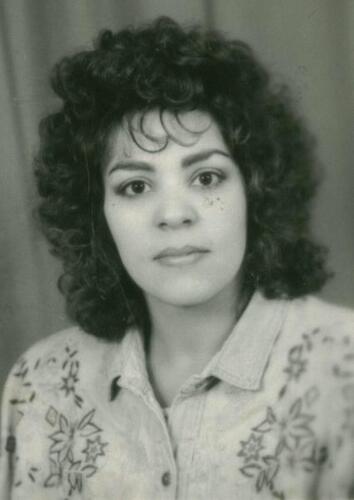
However, a god and a melancholic feeling have bolded her problems. “God told me other things: He told me that laughing is like flying. Laughter is the language of soul and …” I had to choose between them and God. First, the narrator chooses her first choice as her fate. A choice that is represented with masks and covering oneself. Covering both her body and her feelings, words, and her soul too.
The last part of this preface and narration at the beginning of the poetic novel “Love is the Life’s Elixir” ends in the rebellion of the female narrator. A woman who becomes a rebel against those rules, laws, and masks.
“I did what I wanted to do at the end. I became naked in front of everybody’s eyes. I took away all those clothes that my father had bought me and my mother had made me put them on. I threw the mask to the ground to break it and … from that time on I feel that the God within me is happy with me. After choosing this way I would laugh every time that I felt happy and I would cry every time that I felt sad”.
After this letter, the first chapter of this poetic novel begins. A work that consists of three seasons and three dating places.
